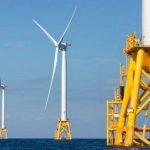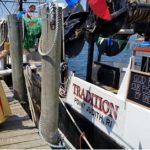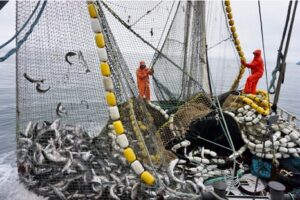Tag Archives: algal blooms

Nutrient Pollution and Algae Blooms: Pollution Has Cost Florida Millions, and the Bill Keeps Rising
Amid a historic fish kill in Biscayne Bay, the public’s eyes are on some of the causes of the dire situation plaguing our waters: nutrient pollution and algal blooms. Nitrogen and phosphorous from fertilizers and sewage-treatment plans across the state are supercharging the growth of toxic algae that makes the water undrinkable and depletes it of oxygen. Cleaning up that algae hasn’t been cheap. Over the past decade, the State of Florida has spent at least $20 million cleaning up and preventing algal blooms in its major bodies of water, according to a recent study by the nonprofit Environmental Working Group (EWG). >click to read< 08:00

Oregon Fish and Wildlife Commission adopts new rules for Dungeness crab
Harmful algal blooms complicated commercial Dungeness crab seasons on the Oregon Coast for the past three seasons, threatening the viability of the state’s most valuable fishery.,,The new rules outline evisceration protocols that go into place when levels of the naturally occurring marine toxin domoic acid spike. The toxin can accumulate at high levels in a crab’s guts, but remove the guts and the meat is still safe to eat. The rules also establish 12 distinct crabbing zones on the Oregon Coast, narrowing the areas that can be closed or opened at any given time. >click to read<22:42
Dungeness crab season could be delayed again by the toxin domoic acid
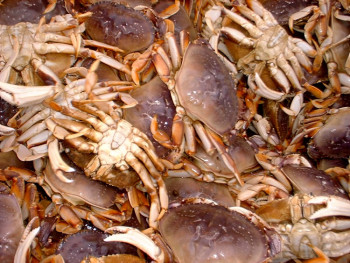 Dungeness crab season is approaching in the Bay Area, along with all the rituals that come with it — the crab feeds and holiday dinners piled with crab legs, sourdough bread and crocks of melted butter. Unfortunately, there’s another, more recent local tradition that is also back: uncertainty about whether algal blooms will delay the season. Domoic acid is the naturally occurring toxin caused by algal blooms that delayed the past two Dungeness crab seasons. According to test results from the California Department of Public Health, elevated levels of the toxin have shown up in samples of Dungeness crab collected in recent weeks at several North Coast ports. However, the agency said it’s too soon to say whether domoic acid will delay the commercial Dungeness fishery, due to open Nov. 15. click here to read the story 11:05
Dungeness crab season is approaching in the Bay Area, along with all the rituals that come with it — the crab feeds and holiday dinners piled with crab legs, sourdough bread and crocks of melted butter. Unfortunately, there’s another, more recent local tradition that is also back: uncertainty about whether algal blooms will delay the season. Domoic acid is the naturally occurring toxin caused by algal blooms that delayed the past two Dungeness crab seasons. According to test results from the California Department of Public Health, elevated levels of the toxin have shown up in samples of Dungeness crab collected in recent weeks at several North Coast ports. However, the agency said it’s too soon to say whether domoic acid will delay the commercial Dungeness fishery, due to open Nov. 15. click here to read the story 11:05

Florida’s building boom threatens wildlife-rich lagoon
The most biologically diverse waterway in America is seriously ill. The Indian River Lagoon is repeatedly being choked with oxygen-robbing algae, its surface increasingly dotted with thousands of dead fish, manatees, birds and other creatures. The culprits: farm runoff and a huge influx of people that has sent lawn fertilizer and other pollutants into the lagoon, which runs 156 miles along Florida’s Atlantic Coast, almost to Palm Beach, and includes the Cape Canaveral area. “It’s the death by a thousand cuts,” said Bob Knight, an environmental scientist with the Howard T. Odum Florida Springs Institute who has studied Florida’s waters for 40 years. The lagoon’s woes threaten the region’s $2.5 billion recreation, fishing and tourism economy, alarming kayak tour operators, charter boat captains, restaurateurs and organizers of bird-watching festivals. click here to read the story 19:48
New Report Identifies Sources of Nitrogen Loading in Local Waters
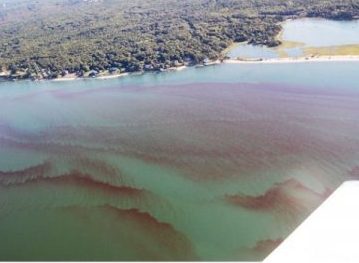 A new report has pinpointed sources of nitrogen loading in local waters. The New York Department of State released the Long Island South Shore Estuary Reserve water quality report on Wednesday, which identifies sources of pollution in eastern bays and takes a closer look at ways to improving the environmental health of local waters, a release said. Nitrogen sources identified in the report include stormwater runoff, drainage or seepage — including seepage from septic systems and cesspools. Other sources include failing or inadequate on-site wastewater treatment systems discharging to the bays, the report says. The “Long Island South Shore Estuary Reserve Eastern Bays Project: Nitrogen Loading, Sources, and Management Options” report was completed in cooperation with Stony Brook University School of Marine and Atmospheric Sciences and is an important step in estimating the amount of nitrogen that causes water degradation to the South Shore of Long Island, officials said. Excess nitrogen has led to an increase in algal blooms, a reduction in seagrass beds that provide habitat for shellfish and finfish and a host of other water quality impairments. The nitrogen pollution has also contributed to the decline of shellfish and commercial fishing on Long Island, the report said. Read the story here 08:21
A new report has pinpointed sources of nitrogen loading in local waters. The New York Department of State released the Long Island South Shore Estuary Reserve water quality report on Wednesday, which identifies sources of pollution in eastern bays and takes a closer look at ways to improving the environmental health of local waters, a release said. Nitrogen sources identified in the report include stormwater runoff, drainage or seepage — including seepage from septic systems and cesspools. Other sources include failing or inadequate on-site wastewater treatment systems discharging to the bays, the report says. The “Long Island South Shore Estuary Reserve Eastern Bays Project: Nitrogen Loading, Sources, and Management Options” report was completed in cooperation with Stony Brook University School of Marine and Atmospheric Sciences and is an important step in estimating the amount of nitrogen that causes water degradation to the South Shore of Long Island, officials said. Excess nitrogen has led to an increase in algal blooms, a reduction in seagrass beds that provide habitat for shellfish and finfish and a host of other water quality impairments. The nitrogen pollution has also contributed to the decline of shellfish and commercial fishing on Long Island, the report said. Read the story here 08:21
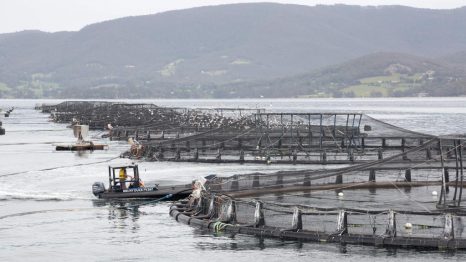
Meanwhile, in Tasmania – Drag fish farm regulation into 21st century
Sea based fish farms dump tonnes of faeces into the water. Think of them as a large toilet that does not flush. I cannot think of an industry in Tasmania other than aquaculture that is allowed to dump an unlimited amount of pollution in our waterways. Not only is there no limit on the amount of faeces salmon farms can dump in coastal waters, Tasmania also lacks science-based regulations to determine which parts of our coastline are suitable for salmon farms. International research shows that if you put fish farms in bays and harbours, where the water is shallow and current speed is low, fish faeces accumulates under cages, killing everything below them. Nitrogen discharged into the water column creates risk of harmful algal blooms, like the types we have seen worsening with increased salmon farms in the Huon and D’Entrecasteaux Channel. Other countries have responded to this research by offering incentives to move farming onshore. Read the story here 12:46
Murky outlook for the upcoming Dungeness crab season
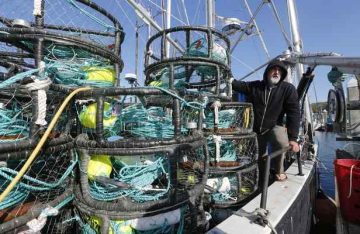 The upcoming Dungeness crab season will likely be affected by harmful algal blooms that contaminate seafood with a potent biotoxin, but the impact on commercial fishing probably won’t be as severe as it was in 2015-16, when the season was disrupted by an unprecedented closure, experts said Wednesday. At a special hearing Wednesday in Sacramento, a leading researcher on algal blooms said ocean temperatures are down this year, but still warmer than normal, and blooms are developing off the Central Coast and in other locations. But right now he is not predicting widespread blooms that would cause a statewide shutdown, as was the case last season. The lousy crab season was bracketed by weak salmon seasons linked to the drought, which has degraded river conditions for young salmon making their way out to sea. “After having a poor salmon season, a poor crab season, now another poor salmon season, it’s definitely really hard on the guys,” said Jim Anderson, a fisherman based at Pillar Point Harbor in San Mateo County. Read the story here 08:19
The upcoming Dungeness crab season will likely be affected by harmful algal blooms that contaminate seafood with a potent biotoxin, but the impact on commercial fishing probably won’t be as severe as it was in 2015-16, when the season was disrupted by an unprecedented closure, experts said Wednesday. At a special hearing Wednesday in Sacramento, a leading researcher on algal blooms said ocean temperatures are down this year, but still warmer than normal, and blooms are developing off the Central Coast and in other locations. But right now he is not predicting widespread blooms that would cause a statewide shutdown, as was the case last season. The lousy crab season was bracketed by weak salmon seasons linked to the drought, which has degraded river conditions for young salmon making their way out to sea. “After having a poor salmon season, a poor crab season, now another poor salmon season, it’s definitely really hard on the guys,” said Jim Anderson, a fisherman based at Pillar Point Harbor in San Mateo County. Read the story here 08:19





































